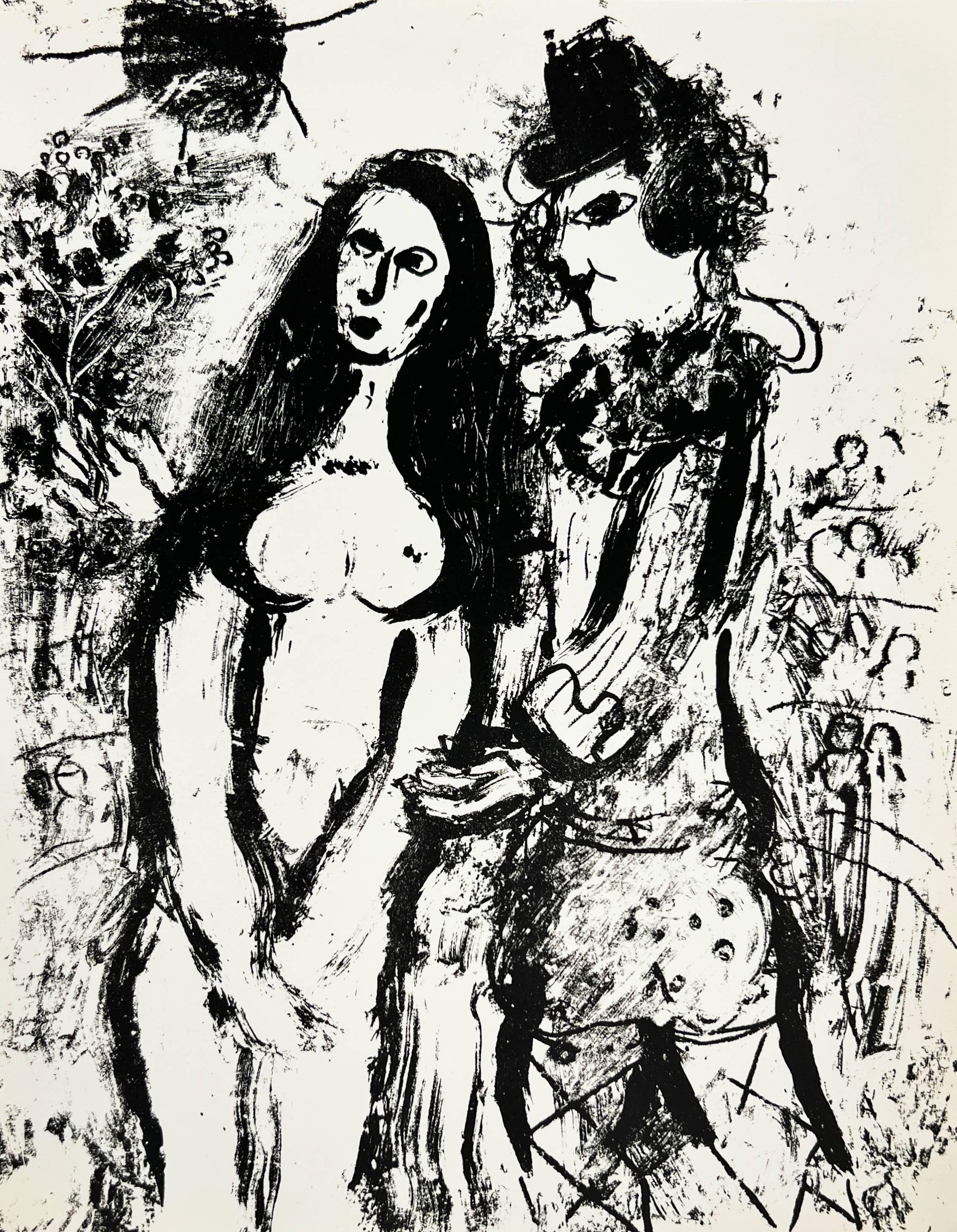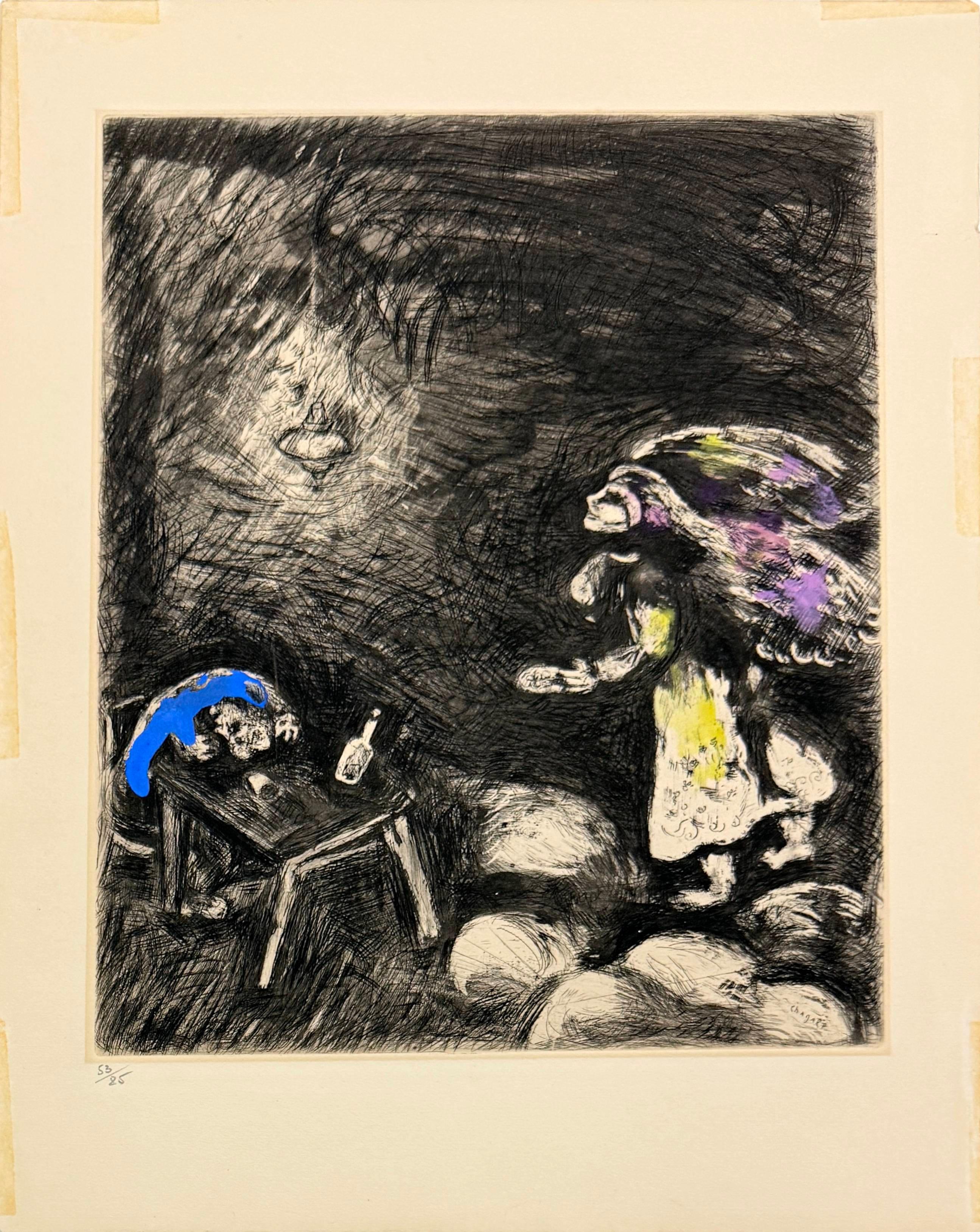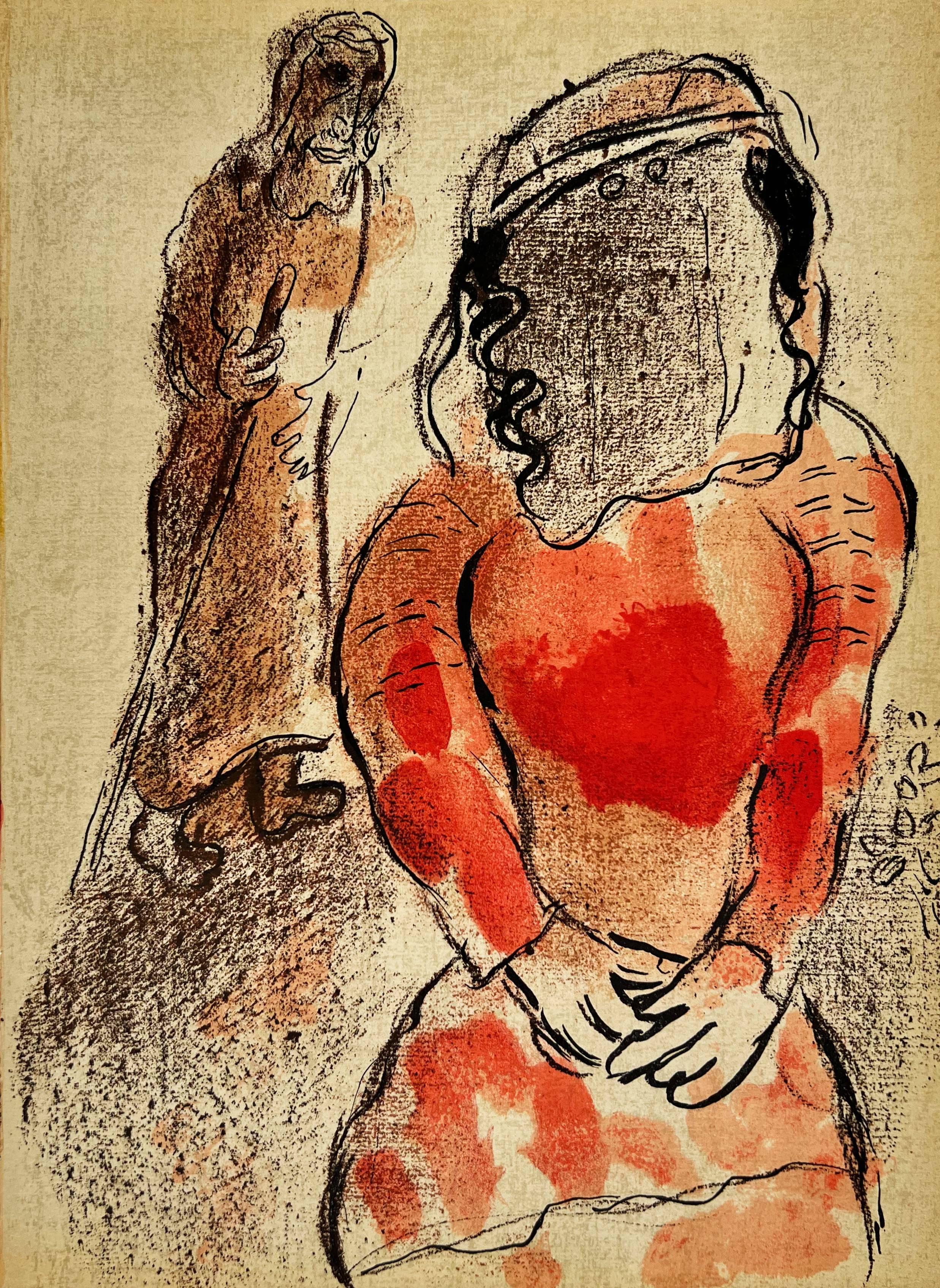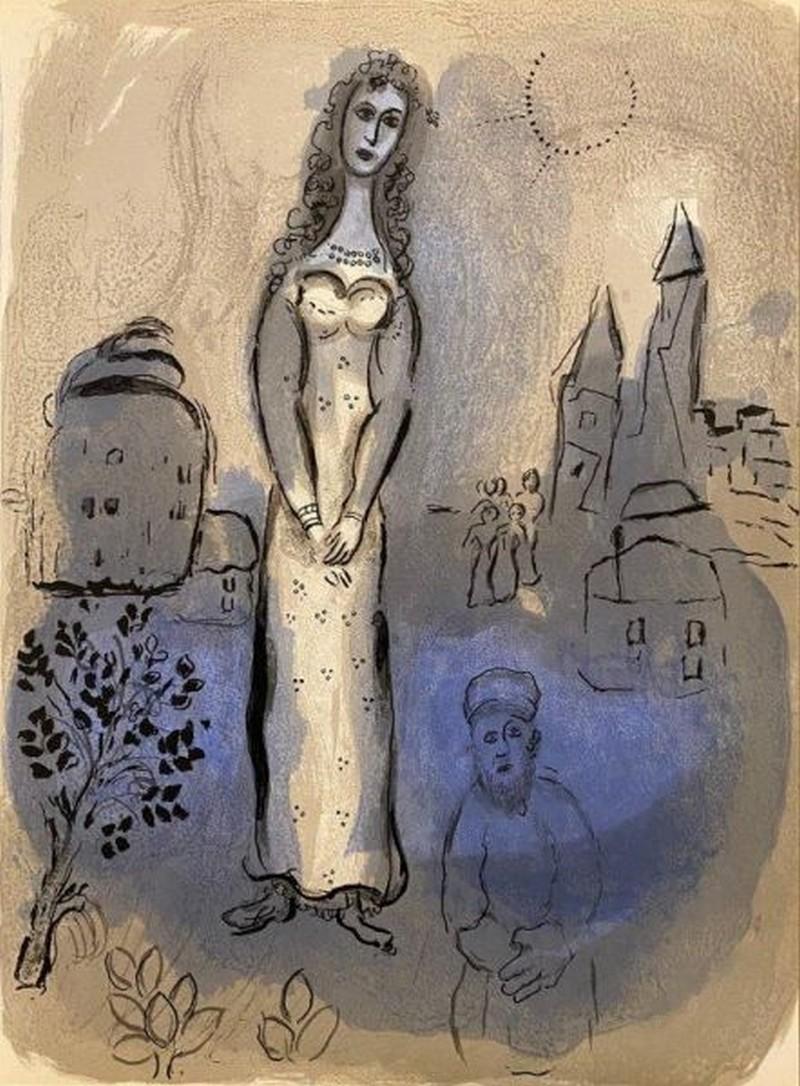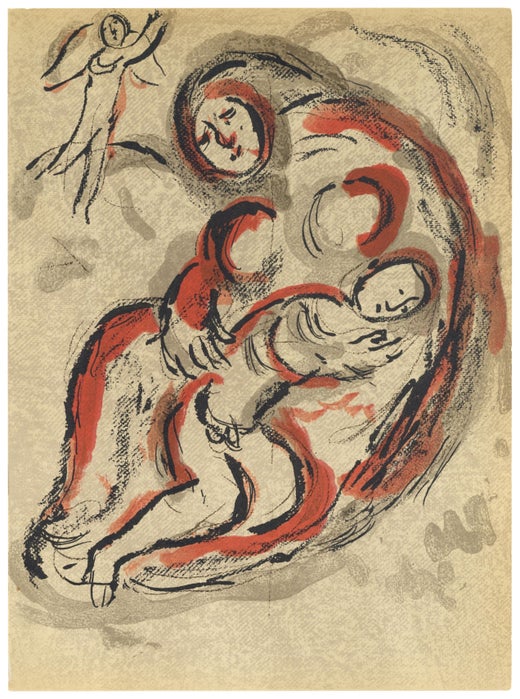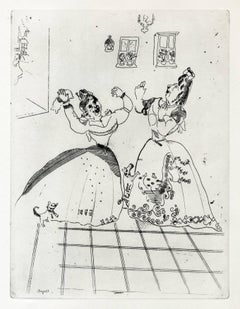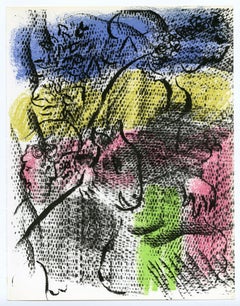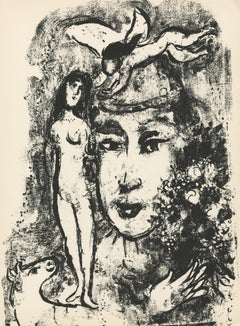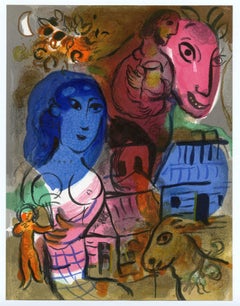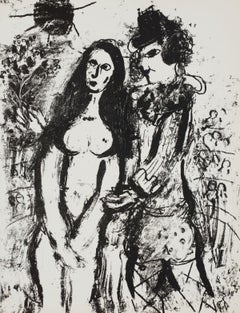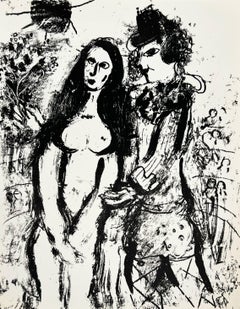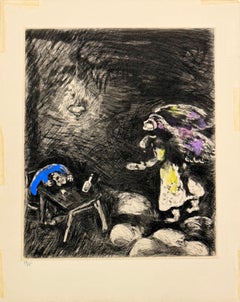Marc ChagallThe Woman and the Street1927-1930
1927-1930
About the Item
- Creator:Marc Chagall (1887 - 1985, French)
- Creation Year:1927-1930
- Dimensions:Height: 11.75 in (29.85 cm)Width: 9.5 in (24.13 cm)
- Medium:
- Movement & Style:
- Period:
- Condition:Tape stain top center recto from pervious hinging.
- Gallery Location:Fairlawn, OH
- Reference Number:Seller: FA88451stDibs: LU14016133592
Marc Chagall
Described by art critic Robert Hughes as "the quintessential Jewish artist of the twentieth century," the Russian-French modernist Marc Chagall worked in nearly every artistic medium. Influenced by Symbolism, Fauvism, Cubism and Surrealism, he developed his own distinctive style, combining avant-garde techniques and motifs with elements drawn from Eastern European Jewish folk art.
Born Moishe Segal in 1887, in Belarus (then part of the Russian empire), Chagall is often celebrated for his figurative paintings, but he also produced stained-glass windows for the cathedrals of Reims and Metz, in France; for the United Nations, in New York; and for the Hadassah Hospital in Jerusalem, as well as book illustrations, stage sets, ceramics, tapestries and fine-art prints. Characterized by a bold color palette and whimsical imagery, his works are often narrative, depicting small-village scenes and quotidian moments of peasant life, as in his late painting The Flight into Egypt from 1980.
Before World War I, Chagall traveled between St. Petersburg, Paris and Berlin. When the conflict broke out, he returned to Soviet-occupied Belarus, where he founded the Vitebsk Arts College before leaving again for Paris in 1922. He fled to the United States during World War II but in 1947 returned to France, where he spent the rest of his life. His peripatetic career left its mark on his style, which was distinctly international, incorporating elements from each of the cultures he experienced.
Marc Chagall remains one of the past century’s most respected talents — find his art on 1stDibs.
- ShippingRetrieving quote...Shipping from: Fairlawn , OH
- Return Policy
More From This Seller
View All1920s French School Figurative Prints
Etching
1970s French School Figurative Prints
Lithograph
1960s French School Figurative Prints
Lithograph
1960s French School Figurative Prints
Lithograph
1970s French School Figurative Prints
Lithograph
1960s French School Figurative Prints
Lithograph
You May Also Like
20th Century Modern Prints and Multiples
Paper, Lithograph
1960s Modern More Prints
Lithograph
1950s Modern More Prints
Etching
20th Century Modern Figurative Prints
Lithograph
1960s French School Figurative Prints
Lithograph
Early 20th Century Modern Figurative Prints
Etching

